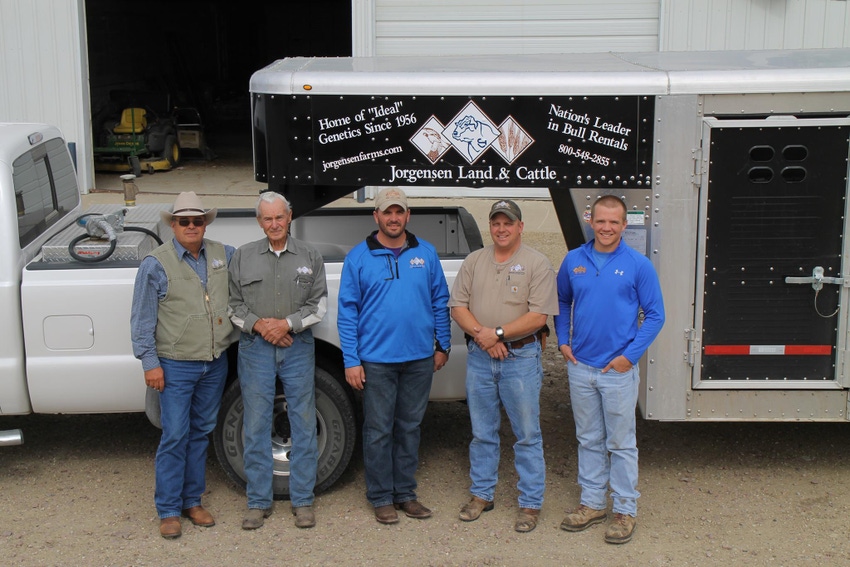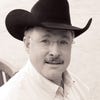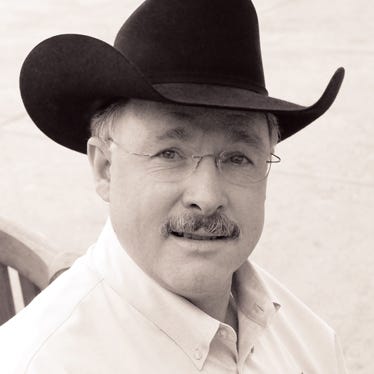Win-Win: Jorgensen Land & Cattle
Jorgensen Land and Cattle enhances sustainability of its family seedstock operation by providing bull customers with proven added value.
January 16, 2021

“It’s important to us to figure out how to provide a quality product at an affordable, sustainable price,” says Cody Jorgensen of Jorgensen Land & Cattle (JLC) at Ideal, SD. “Unless you have a special calf buy-back deal, I believe it’s difficult for a commercial producer to pay much more than $5,000-$6,000 for a bull and make it work economically, given the expected three years of use and the cost of keeping it.”
On the other side of the coin, earning that sort of average price is hard to sustain over time, especially with the volume of bulls JLC markets and services—upwards of 4,000 bulls every year.
That’s one reason JLC began leasing each bull for two breeding seasons and then marketing them at 30 months of age. But, let’s not get ahead of ourselves.
Performance testing from the start
If you’ve been in the cattle business for any length of time, especially across the Northern Plains, the JLC name is familiar, starting with Cody’s grandfather, Martin Jorgensen, Jr.
Building bulls in order to advance their own commercial herd is what led Martin and his brother, Don, to enter the seedstock business to begin with. That was back in early 1950s. They couldn’t buy bulls that would add the kind of performance to their herd that they wanted. So, they started to build their own, buying and performance testing an Angus herd, using hard data rather than emotion to guide their efforts.
A fascinating book details the history and philosophies that led Martin to stack pedigrees and embrace line breeding—breeding proven best to proven best—which continues to define the JLC mating strategy. The book’s title is Ideal Pioneers: Memoirs of Martin F. Jorgensen Jr. and a history of Jorgensen Land & Cattle. A story of faith, love and determination.
“He was a pioneer. None of us know anything different than going forward with genetics that prove themselves to be the best,” Cody says.
“We never deviated our genetics program from the year 1958 on,” Martin explains in the book, written by longtime BEEF editor, Joe Roybal. “Our objective has always been to select for–in this order–high reproduction ability, fast growth and a desirable carcass. Beginning with my brother Don and I, then my son Greg, and now my grandson Cody, we’ve kept these three factors uppermost and foremost in our breeding selection criteria through the years.”
In the book, Cody adds one thing to that equation:
“There are four basic things we like to study – feed efficiency, carcass merit, reproduction efficiency and post-weaning gain. Structure and soundness are givens and must be above average. Since we lease our bulls and don’t actually sell them until they are 30 months of age, we have a good handle on any soundness or structural issues, and that’s been a huge tool for us as well.”
JLC production pyramid
In short, broad strokes, think of JLC bull production as a pyramid. At the top is the JLC nucleus, a herd of 825 registered Angus cows, which produces replacements for the herd, as well as registered Angus bulls.
Next come JLC cooperator herds—there are 15—which purchase many of these registered bulls in an annual auction open to the world. By virtue of using JLC genetics for so many years on so many cows, the herds of these hand-selected programs closely reflect the nucleus herd. However, the straight-bred Angus cows in each are not registered. These herds produce the bulls that JLC buys at weaning (October-November), develops and markets.
These bulls go to commercial herds across the United States. Figure the yearling and 2-year-old bulls leased each year, along with sold 30-month-old bulls and an assumed breeding life of three years, and JLC estimates 6,500 of their bulls are breeding cows each year. Figure each bull sires 20 calves, and you’re talking about 130,000 commercial calves each year sired by JLC genetics.
Marketing bulls three times
These yearling Bulls are leased—typically within a 350-mile radius—the first time for a 60-90-day breeding season beginning June 1. After that first season, these bulls come back to JLC, for fall grazing, including cover crops like fall radishes and turnips. Ultimately, these bulls are leased out for a second breeding season as 2-year-old bulls. After the second breeding season, the bulls go back to JLC where they are conditioned and then sold private treaty and at select auctions as 30-month-old SmartBullsTM.
Until this year, JLC marketed SmartBulls almost exclusively to commercial producers along the Gulf Coast. In October, the firm hosted its first SmartBull sale in South Dakota.
“We’ve had them during the roughest parts of their lives and had time to get their rumen expanded. They have a full set of teeth and enough rumen capacity to eat wet grass like they have along the Gulf Coast,” Cody explains.
Early on, producers in that neck of the woods said they wanted 2-year-old bulls. Cody explains he and the JLC crew soon realized those clients needed an older bull instead, one that had a full set of adult teeth and enough rumen capacity for the environment.
For some economic perspective, JCL’s goal is to gross $5,000-$6,000 on each bull. A yearling bull is leased for $1,350 per breeding season; $1,650 for a 2-year-old. As SmartBulls they command $2,500-$3,500.
“For every bull you winter, you could probably run two additional cows. That pays for what it costs to lease a bull from us. And, you can shave bull cost off of your bottom line when you consider opportunity cost. People get it, so it’s an easy sell,” Cody says.
Of course, the notion of leasing bulls to breed cows comes with baggage for some who look at it through a traditional lens. Historically, those who leased bulls often did so with no intention of retaining any heifers from those bulls because there wasn’t necessarily a program or seedstock herd to consider. Some JLC clients still tell Cody their goal with leasing is to get a live calf for a reasonable breeding cost.
“I want our customers to have more than a live calf. We want to produce affordable bulls that supply customers with calves that have the genetics to go on and do good for the rest of the industry,” Cody says. “When it’s a good deal for everyone, everyone wins, no matter what the market is at the time. There is a genetic value and an economic value.”
Other baggage traditionally associated with leasing bulls has to do with cattle health, especially as it pertains to the perceived risk of trichiomoniasis.
JLC tests each bull for trich after every breeding season. They test the bulls they use in their own herd after each season, too.
“Still today, in the continental United States, the most acres of single-use land are in grazing. Cows are a byproduct of land ownership,” Cody explains. “Compared to other industries, the beef industry won’t vertically integrate, in my opinion. People need bulls. We just need to figure out how to get a good product to them, for an affordable price that can create a product that has value to them.”
Upping genetic prediction
With that in mind, JLC began working with Zoetis about three years ago to develop its own genetic evaluation—the Ideal Beef Evaluation—which includes cattle from JLC and its cooperator herds. It encompasses more than 10,000 genotyped animals and incorporates more than 35 years worth of breeding and production records.
“It’s no different that what Grandpa did in the 50s and 60s, except that we have a map of the genome and something either is or isn’t; it’s not speculative,” Cody says.
“With our own herd and our cooperator herds we have the ability to study our own genetics against themselves. I can’t help but feel like that by the end of the day our own genetic evaluation will mean more to us.”
That’s not knocking the genetic evaluation provided by the American Angus Association. JLC uses it in their registered herd and promote its use by others.
Their own evaluation, though, comes some advantages, including quality control over phenotypic data, large contemporary groups and the ability to innovate.
“We’re going to be able to look at things that are important to us and our customers, specifically,” Cody explains.
An example is an EPD that predicts differences in likelihood a bull will pass a breeding soundness examination as a yearling. Others under consideration and/or development focus directly on commercial users of JLC genetics, things like resistance to fescue toxicity, bull durability and cow mothering ability. That’s in addition to EPDs for traditionally considered traits.
“It offers them flexibility in how they evaluate traditional traits and adds predictions for non-traditional traits,” says Kent Andersen, Zoetis director of beef genetic technical services. “It offers them a unique ability to control their own genetic destiny.”
By the way, the Ideal Beef Evaluation was borne out of an annual strategic planning process that includes expertise from outside the JLC network.
The Ideal Beef Evaluation includes economic selection indexes called Jorgensen Versatility Indexes. Currently, there is one geared to selecting heifer bulls and one aimed at higher growth bulls for use on mature cows. Another being developed focuses on post-weaning feedlot and carcass traits.
“Any new traits can be incorporated into their economic indexes, and we can customize the indexes for what’s important to their customers,” Andersen explains.
JLC customers were first able to utilize information from the genetic evaluation last fall.
“The blend of genomic information with production and reproduction records across purebred and commercial herds powers our predictive ability and makes us excited about what we can accomplish through the Ideal Beef Evaluation,” says David Thomas, JLC director of marketing and development.
“For me, it’s the next game changer in our industry. From out perspective, it can potentially help our customers not only with the genetic footprint but elevate the quality of their cattle,” Cody says.
JLC today
Keep in mind, the seedstock program is one of three essential components that comprise JLC. The other two are an extensive diversified farming enterprise and what Cody terms agricultural production entertainment. For the latter, think in terms of guided pheasant hunts.
“We think if we can farm an acre of land like it needs to be farmed, then also potentially graze each acre and potentially generate value from production agriculture entertainment, if you do those three things, it puts you in a position to sustain your family for generations to come,” Cody says.
The managing partners are Cody, who makes all of the decisions regarding the cowherd, negotiates prices on bulls purchased from cooperators and the like. Cody’s Dad, Greg, who held those same reins previously, leads the bull marketing charge, building on the network of commercial relationships he developed in Florida over the years. Cody’s Uncle, Bryan (Greg’s brother) is in charge of all things having to do with farming and agronomy. The newest family partner is Nick (Bryan’s son), an MBA graduate who is JLC CEO and handles a wide variety of analytical, data and financial as aspects of the operation.
“The diversity in our ages and personalities makes for a lot of constructive thinking and excellent communication,” Cody says.
These four sit down every Monday at 6:30 in the morning to review, plan the week and figure out which of their trusted, long-time employees will be needed where and when.
“With the right people, you can accomplish a lot of things,” Cody says. “It takes really good people to make all of this work. Everybody that works here is considered part of the family.”
About the Author(s)
You May Also Like




.png?width=300&auto=webp&quality=80&disable=upscale)
